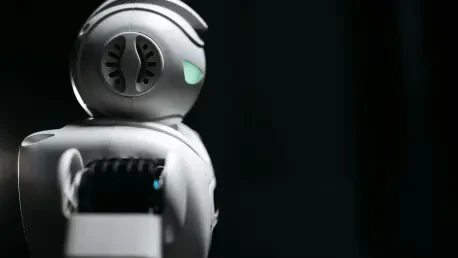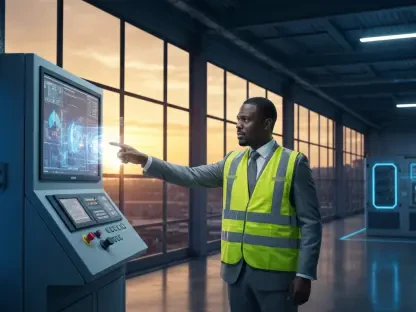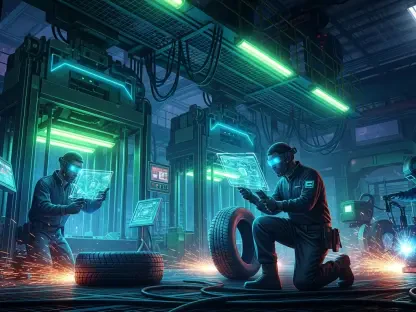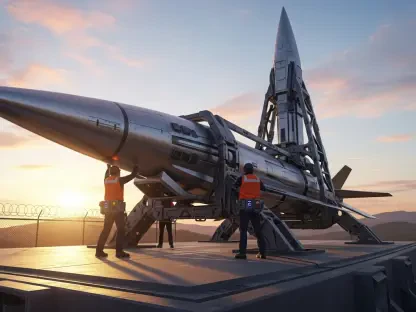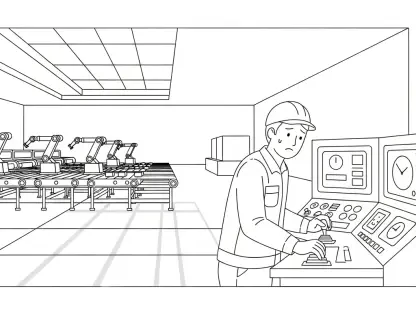Imagine a world where robots walk among humans, not just as tools but as assistants, caregivers, and companions, seamlessly blending into factories, hospitals, and even homes. At the core of this futuristic vision lie humanoid robot reducers—specialized gear components that enable precise movement, stability, and control in robots designed to emulate human actions. These speed reducers are pivotal for managing torque and facilitating complex joint motions, making them indispensable in the rapidly evolving robotics landscape. With the humanoid robot reducer market expected to surge from USD 1.47 billion currently to a remarkable USD 5.0 billion by 2035, reflecting a compound annual growth rate (CAGR) of 13.1%, the impact of these components cannot be overstated. This growth trajectory signals a transformative shift, promising to redefine industries and daily life over the next decade as humanoid robots become more integrated into diverse environments.
The rise of humanoid robots is no longer confined to science fiction; it is a tangible reality reshaping multiple sectors. From streamlining repetitive tasks on manufacturing floors to providing empathetic support in elderly care, their applications are expanding at an unprecedented pace. This surge directly increases the demand for high-performance reducers capable of enduring heavy loads and executing intricate movements with precision. Far from being a minor segment, the reducer market stands as a foundational pillar of robotics, poised to drive efficiency and enhance human-robot collaboration. As technological boundaries are pushed, these components will play a critical role in ensuring robots can perform tasks with human-like finesse, setting the stage for a future where automation and interaction converge seamlessly by 2035.
Market Growth and Importance
Rising Demand and Economic Impact
The projected expansion of the humanoid robot reducer market underscores its growing significance in the global economy, with an anticipated increase from USD 1.47 billion to USD 5.0 billion by 2035, driven by a steady CAGR of 13.1%. This sector is becoming a powerhouse within robotics. The escalating reliance on humanoid robots across industries like manufacturing, healthcare, and retail fuels this growth, as businesses seek to enhance productivity and address labor shortages. Reducers, as critical enablers of precise motion control, are central to this trend, ensuring robots can handle complex tasks reliably. Their economic impact extends beyond direct market value, influencing job creation in tech development and manufacturing while reducing operational costs through automation. This dynamic positions the reducer market as a key driver of industrial transformation over the coming years.
Beyond immediate economic benefits, the ripple effects of this market’s growth touch on broader societal shifts. As humanoid robots become integral to sectors such as logistics and public services, the demand for robust reducers translates into significant investments in innovation and infrastructure. Governments and private entities alike are funneling resources into robotics ecosystems, recognizing the potential for these technologies to solve pressing challenges like aging populations and workforce inefficiencies. The financial stakes are high, with billions in revenue at play, but so are the opportunities for creating more adaptive and responsive economic systems. By 2035, the widespread adoption of humanoid robots, supported by advanced reducers, could redefine productivity benchmarks, making this market a linchpin of future economic stability and growth.
Sector-Wide Implications
The implications of this market’s expansion are felt across a wide array of industries, each benefiting uniquely from humanoid robot integration. In manufacturing, robots equipped with high-quality reducers tackle repetitive, high-precision tasks, slashing production times and minimizing errors. Meanwhile, in healthcare, these robots assist with patient care, from mobility support to routine monitoring, addressing critical staffing shortages. Retail and hospitality sectors are also witnessing a surge in robot use for customer service, where reducers ensure smooth interactions through lifelike movements. This cross-sector demand not only boosts the reducer market but also accelerates the standardization of robotic solutions, potentially lowering costs and increasing accessibility for smaller enterprises by 2035.
Moreover, the economic influence of reducers in robotics extends to fostering global trade and collaboration. As industries adopt these technologies at varying paces, international supply chains for reducer components are becoming more interconnected, with countries specializing in different aspects of production and innovation. This creates a complex but vibrant market ecosystem where economic benefits are shared, albeit unevenly, across regions. The push for scalable robotic solutions also encourages policy frameworks that support tech investments, further embedding humanoid robots into economic strategies. Over the next decade, the sustained growth of this market will likely catalyze new business models centered on automation, fundamentally altering how industries operate and compete on a global stage.
Technological Innovations
Advancements in Reducer Design
Technological breakthroughs in reducer design are propelling the capabilities of humanoid robots to new heights, with innovations such as zero-backlash harmonic drives and high-reliability cycloidal drives setting new standards for precision and durability. These qualities are essential for robots mimicking human movements. These designs minimize mechanical play, ensuring that every motion is accurate, which is crucial for tasks requiring fine motor skills in industrial or medical settings. The integration of artificial intelligence (AI) into these systems further enhances performance by enabling real-time adjustments and predictive maintenance, reducing the risk of unexpected failures. Such advancements are not merely incremental; they represent a leap forward in making humanoid robots more reliable and versatile across applications by 2035.
Another dimension of progress lies in how these cutting-edge designs address the unique challenges of humanoid robotics, which differ significantly from those of traditional industrial robots. Unlike their industrial counterparts, humanoid models require reducers that can support multi-axis joint movements under dynamic loads, replicating the complexity of human anatomy. Developers are focusing on compact gear systems that deliver high torque in smaller packages, allowing robots to operate in confined spaces without sacrificing power. Additionally, advancements in noise reduction technologies ensure that these robots can function in sensitive environments like hospitals or homes without disruption. As these design innovations continue to evolve, they will likely become the backbone of next-generation humanoid robots, enabling unprecedented levels of functionality and interaction.
Materials and Efficiency
The role of advanced materials in enhancing reducer efficiency marks another critical area of innovation, where lightweight yet robust materials like carbon fiber and hardened alloy steels are increasingly utilized to construct reducers that withstand high stress while reducing overall robot weight. This balance is vital for humanoid robots, which must be agile and energy-efficient to perform tasks ranging from lifting heavy objects to navigating crowded spaces. By minimizing energy loss through improved gear meshing and advanced lubrication systems, manufacturers are also extending the operational lifespan of these components. Such developments make humanoid robots more cost-effective for long-term deployment, a key factor in their widespread adoption by 2035.
Energy efficiency in reducer design is not just about cutting costs; it’s about sustainability in a broader sense. Modern manufacturing techniques are prioritizing eco-friendly practices, incorporating recyclable materials and reducing waste during production. Furthermore, AI-driven monitoring systems embedded in reducers help optimize power usage by detecting inefficiencies in real-time, ensuring that robots consume only what is necessary for each task. This focus on sustainable engineering aligns with global trends toward greener technologies, positioning the reducer market as a leader in responsible innovation. As these efficiency-driven designs mature, they will likely set new benchmarks for robotic systems, balancing performance with environmental considerations over the coming decade.
Regional Dynamics
Asia-Pacific Leadership
Asia-Pacific stands as the epicenter of the humanoid robot reducer market, driven by the technological prowess and manufacturing might of countries like Japan, China, and South Korea. Japan leads with its expertise in precision engineering, producing reducers that set global standards for quality and reliability, often integrated into cutting-edge humanoid robots. China, with its massive production capacity, is rapidly scaling up domestic output to meet both local and international demand, supported by substantial government incentives. South Korea, meanwhile, focuses on innovative applications, pushing the boundaries of how reducers enable advanced robotic interactions. This regional dominance is underpinned by robust robotics ecosystems and significant investments, positioning Asia-Pacific as the heartbeat of market growth through 2035.
The strategic focus of Asia-Pacific countries on robotics fosters a competitive yet collaborative environment that accelerates advancements in reducers, essential components for robotic systems. Joint ventures between tech giants and government-backed research initiatives are common, driving innovations tailored to diverse industrial needs. For instance, the region’s emphasis on automation in manufacturing and warehousing has spurred demand for high-torque reducers capable of relentless operation. Additionally, cultural acceptance of robots in daily life, particularly in Japan and South Korea, fuels unique applications in service sectors, further expanding the market. As these nations continue to lead, their influence will likely shape global trends, making Asia-Pacific a critical hub for the evolution of humanoid robotics over the next decade.
Contributions of North America and Europe
North America and Europe bring distinct strengths to the humanoid robot reducer market, focusing heavily on research and development (R&D) and niche applications. In North America, particularly the United States, substantial investments in academic and corporate R&D are yielding breakthroughs in reducer technology, often tailored for specialized uses in healthcare and defense. These sectors demand reducers that prioritize precision and safety, ensuring robots can perform delicate tasks like surgical assistance or secure operations. The region’s tech hubs foster innovation through collaborations between universities and industry, creating a pipeline of advanced solutions that complement global manufacturing efforts by 2035.
Europe, on the other hand, excels in integrating reducers into industrial automation and healthcare robotics, driven by stringent quality standards and a focus on human-centric design. Countries like Germany and France are at the forefront, leveraging their engineering heritage to develop reducers that enhance robot efficiency in smart factories and patient care settings. The region’s emphasis on regulatory compliance ensures that robotic systems, supported by reliable reducers, meet high safety and ethical benchmarks, particularly in public-facing roles. This balanced approach, combining innovation with practical application, positions Europe as a vital contributor to the market, offering a counterpoint to Asia-Pacific’s production focus and enriching the global robotics landscape over the coming years.
Competitive Landscape
Innovation and Collaboration
The competitive landscape of the humanoid robot reducer market is marked by relentless innovation as companies vie to deliver cutting-edge solutions. Established players and agile startups are investing heavily in developing compact, lightweight, and high-performance reducers that meet the exacting demands of humanoid robotics. Harmonic and cycloidal drives, known for their precision, are often at the forefront of these efforts, with firms pushing to enhance torque output while minimizing size. Beyond standalone advancements, strategic partnerships between reducer manufacturers and robotics companies are becoming increasingly common, enabling customized solutions for specific applications like industrial automation or personal assistance. This collaborative spirit is driving rapid progress, setting the stage for transformative robotic capabilities by 2035.
Competition also fuels a race to address emerging challenges in humanoid robot design through innovative approaches. Companies are exploring AI integration to create smart reducers that adapt to varying loads and predict maintenance needs, reducing downtime in critical operations. Additionally, investments in automated production techniques are lowering costs, allowing firms to scale innovations without sacrificing quality. The dynamic interplay of rivalry and cooperation ensures that the market remains vibrant, with continuous improvements in reducer technology. As this competitive momentum builds, it will likely result in more accessible and advanced robotic systems, broadening their impact across industries over the next decade.
Market Differentiation Strategies
Differentiation is a key focus for companies in the reducer market, as they strive to stand out in an increasingly crowded field. Some firms prioritize thermal efficiency and durability, designing reducers that operate under extreme conditions without degradation, making them ideal for industrial environments. Others focus on weight reduction, crafting components that enable lighter, more agile humanoid robots suitable for domestic or service roles. Branding and specialization also play a role, with companies targeting niche sectors like defense or elder care, where tailored reducer solutions can command premium pricing. These strategies not only drive market segmentation but also encourage innovation tailored to specific user needs, shaping a diverse and responsive industry landscape by 2035.
Another layer of differentiation lies in how companies position themselves within the global supply chain. Some opt to control the entire production process, ensuring quality and consistency, while others focus on modular designs that allow easy integration into various robotic platforms. Marketing efforts often highlight unique selling points, such as energy efficiency or compatibility with AI systems, to attract robotics manufacturers seeking reliable partners. This multifaceted approach to standing out ensures that the market evolves in multiple directions, catering to a wide array of applications. As competition intensifies, these differentiation tactics will likely refine the role of reducers, making them more specialized and integral to the next wave of robotic advancements.
Industry Trends
Automation and Miniaturization
Automation is a dominant force reshaping industries, and humanoid robots are at the forefront of this shift, with reducers playing a critical enabling role by enhancing mechanical efficiency. In sectors like manufacturing and warehousing, robots equipped with high-quality reducers handle labor-intensive tasks with precision, significantly boosting efficiency and reducing human error. The demand for seamless operation in these high-stakes environments drives the need for reducers that offer reliability under constant use. As automation extends into service industries, such as retail customer support, the versatility of these components becomes even more crucial. This trend underscores the growing indispensability of reducers, positioning them as vital to the scalability of robotic solutions across diverse operational landscapes by 2035.
Parallel to automation is the push for miniaturization, addressing the need for humanoid robots to operate in compact or domestic spaces. Reducers must shrink in size without compromising on power or torque, a challenge met through innovations in gear design and material science. Harmonic and cycloidal reducers, prized for their high torque density in small footprints, are increasingly favored for this purpose. Manufacturers are refining production techniques to create intricate, smaller components that maintain performance standards, ensuring robots can navigate tight environments or assist in personal settings. This focus on smaller, efficient designs will likely redefine how humanoid robots are deployed, making them more practical and ubiquitous in everyday scenarios over the next decade.
Sustainability in Design
Sustainability is emerging as a pivotal trend in reducer manufacturing, reflecting broader global priorities around environmental responsibility, and manufacturers are adopting energy-efficient designs to support this shift. These designs reduce power consumption during robot operation, lowering operational costs and carbon footprints. Advanced lubrication systems and noise-reduction technologies further enhance component longevity, minimizing the need for frequent replacements and reducing waste. These efforts align with the push for greener industrial practices, ensuring that the rapid growth of humanoid robotics does not come at an ecological cost. By 2035, such sustainable designs could become standard, reinforcing the market’s role in supporting environmentally conscious automation.
Beyond energy efficiency, the integration of predictive maintenance technologies is bolstering sustainability in reducer design, while AI-driven systems monitor wear and tear in real-time, alerting operators to potential issues before they escalate, thus extending the lifespan of components. Additionally, the use of recyclable materials in production is gaining traction, addressing concerns about resource depletion and end-of-life disposal. These initiatives not only enhance the appeal of humanoid robots for eco-minded businesses but also set a precedent for responsible innovation in robotics. As sustainability becomes a competitive differentiator, the focus on durable, efficient reducers will likely shape market dynamics, fostering a balance between technological advancement and environmental stewardship.
Societal Implications
Human-Robot Interaction
The evolution of humanoid robot reducers carries profound implications for human-robot interaction, particularly as robots become more embedded in public and personal spaces. High-performance reducers ensure that movements are smooth and predictable, which is a critical factor for safety when robots assist in settings like retail, hospitality, or homes. For instance, a robot helping with household tasks must execute motions with precision to avoid accidents, a capability directly tied to reducer quality. As these components improve, trust in robotic systems grows, paving the way for deeper integration into daily life. By 2035, such advancements could transform robots into reliable partners, reshaping societal norms around technology and interaction in diverse environments.
Another critical aspect is how reducers enable emotional and functional connections between humans and robots, especially in fields where technology intersects with personal care. In healthcare, where robots support elderly care or rehabilitation, precise control facilitated by advanced reducers allows for gentle, human-like interactions that foster comfort and acceptance. Public spaces, too, benefit from robots that move naturally, reducing the alienation often associated with mechanical entities. The role of reducers in refining these interactions cannot be understated, as they bridge the mechanical and human divide through seamless operation. Over the next decade, this technological refinement will likely encourage broader societal acceptance, making humanoid robots a familiar and trusted presence in various facets of life.
Future Societal Integration
Looking ahead, the societal integration of humanoid robots, supported by advanced reducers, promises to address significant demographic and labor challenges, particularly in regions with aging populations. These populations stand to benefit from robotic caregivers, where reducers ensure safe and reliable assistance with daily activities, enhancing quality of life. Similarly, in education or community roles, robots with precise motion control can serve as tutors or public assistants, filling gaps where human resources are scarce. This potential to alleviate societal pressures highlights the broader value of reducer technology, positioning it as a catalyst for positive change. By 2035, such integration could redefine social structures, with robots becoming essential contributors to community well-being.
The long-term impact of robotic integration extends beyond technology to ethical and cultural dimensions, raising complex questions about autonomy, privacy, and the role of technology in human relationships. As reducers enable more lifelike and dependable robot behaviors, societies will grapple with these issues. Robust components that prevent malfunctions or erratic movements are crucial for maintaining public confidence in these systems, ensuring they are seen as beneficial rather than intrusive. Policymakers and technologists will need to collaborate on frameworks that balance innovation with societal values, a process that will evolve alongside advancements in reducers. By the end of the forecast period, the seamless incorporation of humanoid robots into daily life, driven by reliable reducers, could mark a new era of coexistence between humans and machines.
